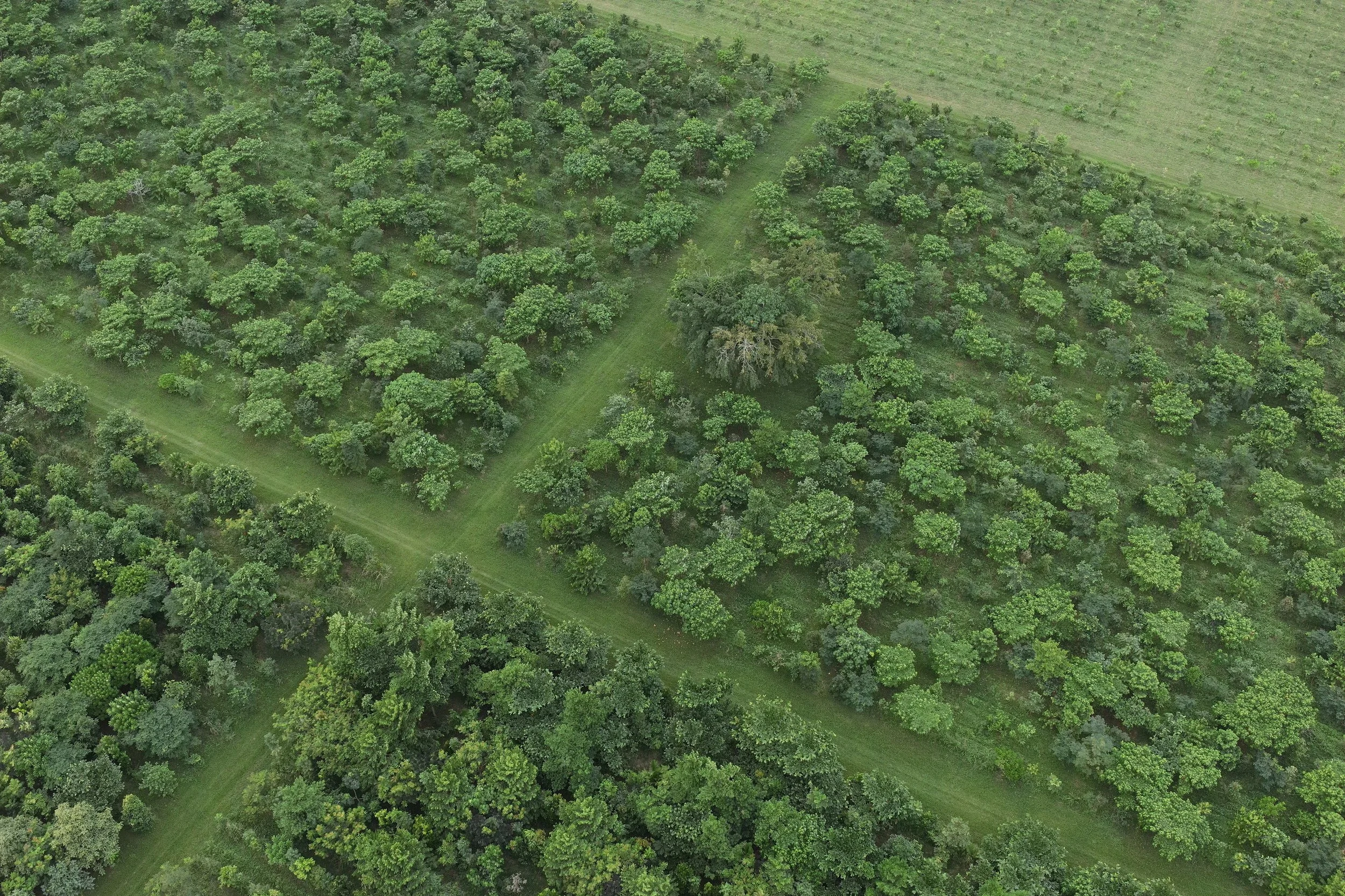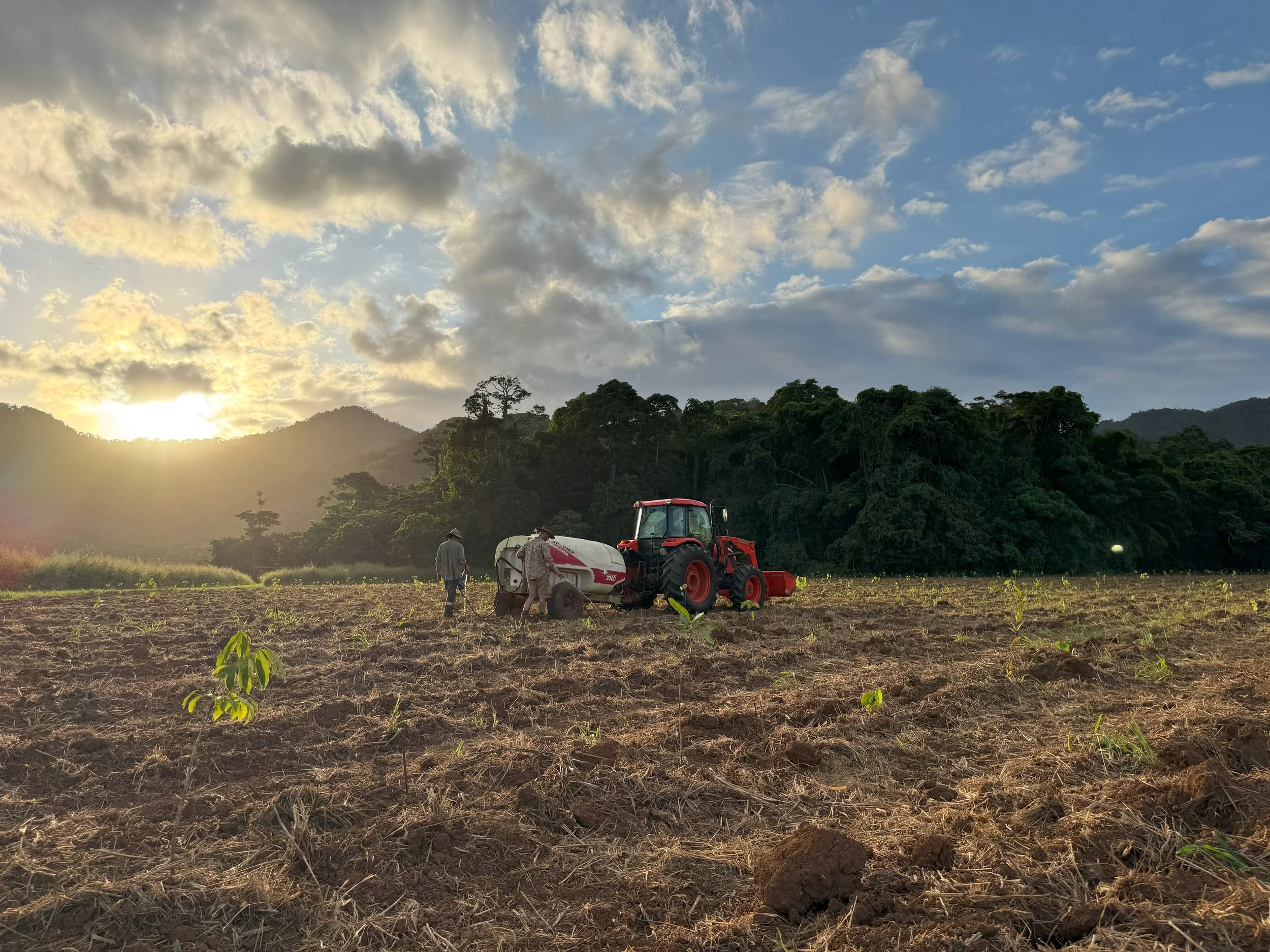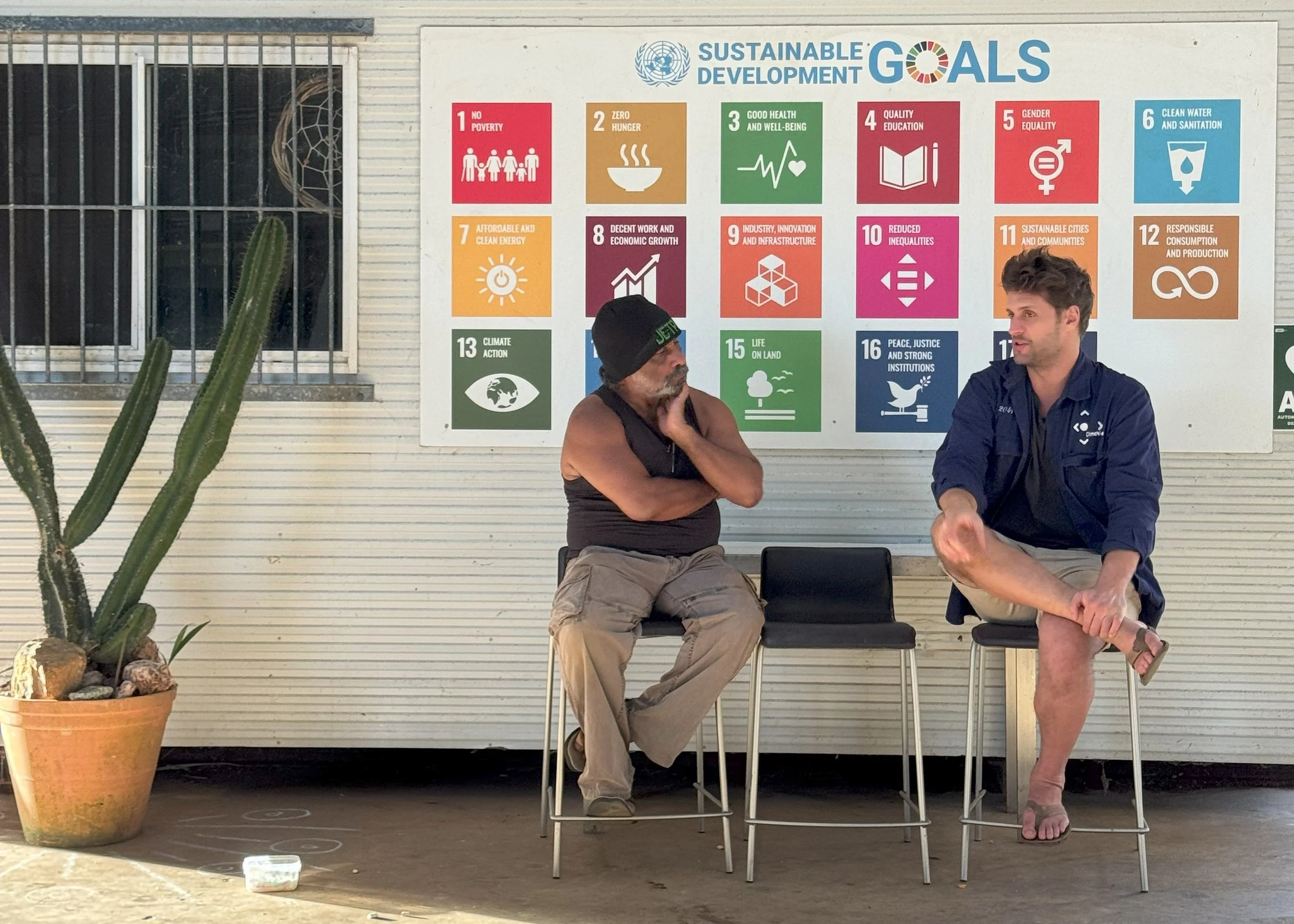Hectares of Possibility: Building a Regenerative Roadmap Across Douglas Shire
In the far reaches of Far North Queensland, Douglas Shire holds a complex story within its soil.
This is a place shaped by the richness of the Daintree Rainforest and the legacy of sugar cane fields; by the steady work of farmers and the deep-time presence of First Nations people; by increasing climate pressure and a community that still remembers when land management was more diverse, more reciprocal, and more connected to place.
This region has known both abundance and exhaustion. And now, it stands at the edge of a new question:
What future can we grow together?
At ClimateForce, we believe the path forward begins with 213 hectares at Cape Kimberley - a living example of what’s possible when regeneration takes root. From there, our vision stretches towards shared regenerative action across Douglas Shire - towards a future where the entire shire becomes a thriving, interconnected landscape of ecological renewal, cultural connection, and meaningful local livelihoods.
From 213 Hectares to a Diverse Regenerative Region
Since 2021, we’ve been working on the “Tropical ReGen” project - a piece of land with its own history of transitions: from rainforest, to cattle, to food production, to fallow land. Now, it’s evolving into a living system of high-biodiversity rainforest, experimental agroforestry, organic food production, and ecosystem restoration.
But this isn’t a standalone story. It’s a prototype in progress - a place to trial, test, and adapt regenerative strategies that can be shared across the region, and beyond. It’s a working model to help co-create a regional regenerative roadmap, rooted in collaboration.
We know that no one solution will fit all. That’s why we’re building a set of flexible, regionally adapted strategies - to support landholders, Traditional Custodians, growers, youth, councils, and local industries to explore models that work for them.
Because regeneration doesn’t mean starting over - it means opening up new possibilities, informed by what’s been, and shaped by what’s to come.
Land Diversification as a Regional Strategy
As Douglas Shire moves towards the future, the opportunity before us isn’t about turning away from the past - it’s about expanding what’s possible.
Monocultures have helped shape the region’s identity. Now, we’re inviting land stewards to explore a broader role for the land - one that supports biodiversity, generates income, strengthens community wellbeing, and creates jobs tied to land stewardship, food systems, research and restoration.
The regenerative transition isn't just good for the planet — it’s good for people, too.
By scaling regenerative practices across Douglas Shire, we can stimulate local economies through a suite of regenerative models tailored to our local context. These models aren’t prescriptive - they’re adaptable frameworks that landholders and communities can shape based on their vision, their landscape, and their starting point.
Five Regenerative Pathways in Practice
1. Native Regeneration Corridors
Focusing on high-biodiversity plantings using native species, these corridors can help restore ecological function, support species like the cassowary, and create new opportunities in carbon and biodiversity credits and low-impact tourism.
2. Blended Food Production & Native Systems
Agroforestry systems that combine native canopy trees with productive species - like fruit, timber, or medicinal plants. These systems create microclimates, build soil health, and support long-term ecological and financial resilience.
3. Dense Agroforestry for Local Food Security
Food forests designed for staggered yields - from short-term greens to long-term canopy crops - reducing reliance on freighted-in produce and opening opportunities for education, co-operatives, and local processing.
4. Agroforestry Timber Models
Integrating long-cycle native hardwoods within biodiversity-supportive frameworks, these models provide an income stream while improving resilience to droughts, storms, and market volatility.
5. Custom Pathways in Development
We’re co-developing tailored transition options for specific land types and industries:
Sugarcane → Agroforestry
Grazing → Silvopasture
Mining → Ecological Restoration
Each pathway is supported by practical guidance, digital infrastructure, and scenario modelling tools to help users explore what’s possible for their land.
This vision is a catalyst for a more circular, resilient regional economy - one that can harmonise local aspirations with state, federal, and international sustainability agendas, from Queensland’s economic diversification goals to Australia’s biodiversity and carbon targets, and even the UN Sustainable Development Goals.
ClimateForce is positioned to help bridge these levels - aligning grassroots initiatives with policy frameworks and investment pipelines to ensure Douglas Shire doesn’t get left behind, but instead leads with integrity.
Why This, Why Now?
The collapse of the Mossman Mill in 2023 left many wondering what comes next for agriculture in the region. Proposals to truck cane to Gordonvale offer short-term relief - but they also raise a deeper question: what is the most strategic, community-aligned use of our land and resources moving forward?
We believe this is a moment of opportunity - not just to solve an immediate problem, but to reimagine land use with future generations in mind.
It’s a chance to:
- Invite landholders into new possibilities.
- Attract values-aligned investment.
- Strengthen community food systems and local industries.
- Position Douglas Shire as a leader in climate-smart, culturally grounded land transition - not just for Queensland, but for the Asia-Pacific.
We’re not suggesting it will be easy. But we know this region holds the wisdom, capacity, and creativity to chart a new course - together. Douglas Shire has the potential to model what a community-led regenerative economy looks like - one that contributes meaningfully to Queensland’s green recovery and Australia’s international climate and biodiversity commitments.
A Platform to Support Regeneration - at Any Scale
To support this transition, we’re building an open-source platform to help landholders and communities in map, model, and manage regenerative land use - all with transparency at its core.
Designed to be accessible, practical, and inclusive, this platform offers tools for everyone - from small farms to cultural land trusts, from schools to councils, from graziers to growers.
What the Platform Offers:
Value Flow Engine
Connects carbon, biodiversity, food, and timber metrics with real-world revenue pathways - projecting outcomes across ecological and economic dimensions.
Live Site Data
Our 213ha pilot site provides real-time insights - from tree survival rates and species diversity to community engagement metrics and environmental monitoring. Each user sees site-specific data tied to their own level of input and activity. This will be unique to your project.
Transparent Modelling Assumptions
Every data point, formula, and method is published - building trust and enabling informed decision-making.
Transition Scenario Modelling
Compare current vs. regenerative systems using return-on-investment tools, carbon metrics, biodiversity outcomes, and resilience factors.
Guidance for Certification Pathways
Whether you're working toward organic certification (ACO), exploring biodiversity credits, or preparing for carbon markets, the platform helps map your steps.
Mapping & Project Management Tools
Plan infrastructure, track restoration efforts, and visualise ecosystem service layers to support on-ground action.
The platform is open source - built to be transparent, adaptable, and accessible. While currently in closed beta, we’re offering full feature access to the first 1000 hectares registered within the system. This initial rollout is designed to reflect the diversity of Douglas Shire’s landholders and primary industries - from small farms to large properties, from coastal zones to inland valleys.
Our aim is to ensure the platform is shaped by real-world use across the broadest cross-section of the community - gathering insights, testing functionality, and refining methodologies that can be shared and repeated. Most importantly, this system is being developed in partnership with the people on the ground - learning together, building trust, and creating a tool that truly supports regenerative land use across the region.
Rooted in Relationships: Regeneration Through Partnership and Community
This work doesn’t happen in isolation - and it’s never meant to.
At ClimateForce, we are privileged to walk alongside a growing community of collaborators: Jabalbina Aboriginal Corporation, Terrain NRM, Rainforest Rescue, and an expanding circle of local farmers, Elders, schools, and youth groups who are actively shaping this roadmap with us.
We’re not here to dictate direction - we’re here to listen, co-create, and support. Our role is to provide tools, open up pathways, and amplify the voices already rooted in this place. Each new project added to the platform brings another story into the larger mosaic of regeneration across Douglas Shire.
And it’s not just about trees.
Our 213-hectare pilot site is alive with possibility - a place where food forests are beginning to flourish, showing how we can reduce reliance on freighted-in food and grow nourishment close to home. It’s where youth and Elders meet on shared ground - planting side by side, exchanging knowledge, and restoring cultural connection. It’s where hands-on workshops teach real skills - from organic weed management to natural soil amendments and regenerative design. And it’s where space is held - for connection, for stillness, for community to breathe and come back into rhythm with the land.
Because regeneration is not only ecological - it’s relational.
It’s about how we care for land, and how land helps us care for each other.
It’s about shared action, shared healing, and shared future-building.
This is a collective journey, rooted in respect and grounded in possibility.
Looking Ahead: From Douglas Shire to the Region and Beyond
This model is already working here - and we believe it can inform land transitions across the broader Asia-Pacific.
From Torres Strait to Timor-Leste, many communities face similar challenges: degraded land, climate shocks, declining food systems, and the need for regenerative economic models.
What we develop in Douglas Shire can become a replicable toolkit - adaptable to different places, but always rooted in locally driven action.
Our roadmap:
MVP (now) → Working Product (2026)
→ Regional Impact (2027–28)
→ APAC-Ready Toolkit (2029+)
Each phase grows the ecosystem - not just the platform, but the people and partnerships behind it.
An Invitation to Walk With Us
You don’t need to know everything about regeneration.
You don’t need to be an expert in carbon, biodiversity, or agroforestry.
You just need to be curious about what’s possible - and willing to explore.
If you're a landholder - whether on 5, 50, or 500 hectares - and want to explore a different path, we’re here to support you.
If you're a Traditional Owner group, a teacher, a farmer, a youth leader, or someone who simply cares about the future of this region - there’s a place for you in this movement.
The story of regeneration isn’t being written by one group - it’s being co-authored by many.
Ready to explore what’s possible?
Reach out to us at support@climateforce.au to connect your land, and join the 1000-hectare regional pilot.
Let’s shape this next chapter in land stewardship - not through theory, but through action, partnership, and persistence.
Together, we can help Douglas Shire not only recover - but lead.





